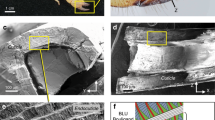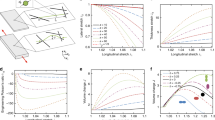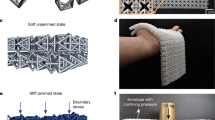Abstract
WE have endeavoured to estimate the spatial configurations of single wool fibres by means of static and dynamic experiments in the decrimping region1. While some fleeces predominantly consist of helical shaped fibres, other fleeces are made up of almost perfectly sinusoidal fibres. Randomized assemblies prepared from the two extreme crimp types reveal strikingly different properties. One of the most outstanding results concerns the unique felting behaviour of wool fibres.
This is a preview of subscription content, access via your institution
Access options
Subscribe to this journal
Receive 51 print issues and online access
$199.00 per year
only $3.90 per issue
Buy this article
- Purchase on Springer Link
- Instant access to full article PDF
Prices may be subject to local taxes which are calculated during checkout
Similar content being viewed by others
References
Balasubramaniam, E., and Whiteley, K. J., Austral. J. App. Sci., 15, 41 (1964).
Blankenburg, G., Fédération Lainière Internationale, Comité Technique, Réunion de Paris, Rapport No. 9 (1962).
Crewther, W. G., and Dowling, L. M., Text. Res. J., 31, 14 (1961).
“A.F.B.” and “K.C.B.”, J. Text. Sci., 1 (1924); 1 (1925); 1, 79 (1926).
Author information
Authors and Affiliations
Rights and permissions
About this article
Cite this article
WHITELEY, K. Crimp Form: a New Factor in Wool Science. Nature 211, 757–758 (1966). https://doi.org/10.1038/211757b0
Issue Date:
DOI: https://doi.org/10.1038/211757b0
Comments
By submitting a comment you agree to abide by our Terms and Community Guidelines. If you find something abusive or that does not comply with our terms or guidelines please flag it as inappropriate.



